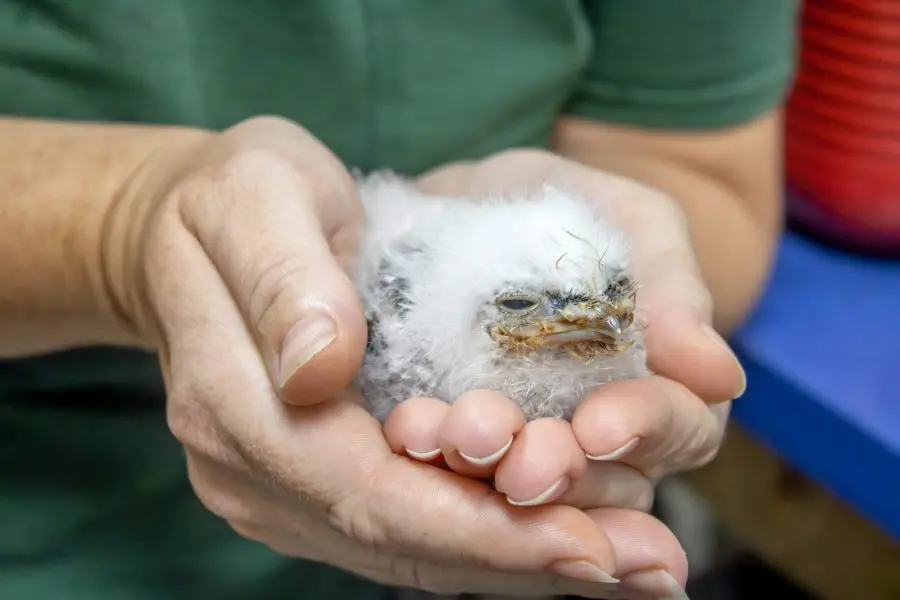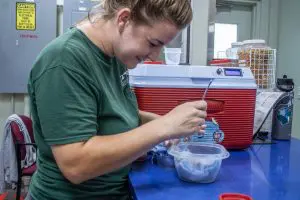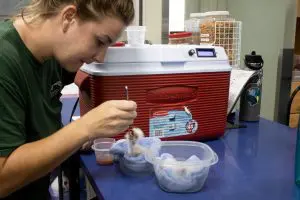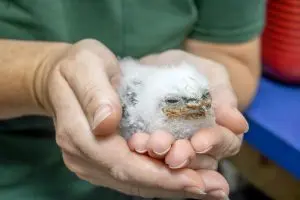

Our newest bundles of fluffy bird joy have arrived! Two tawny frogmouth chicks have hatched at our Zoo. The road from tiny balls of floof to a bird often confused for an owl will go quickly!
These are the first chicks at our Zoo for our male, Dijon, although our female, Hotdog, has had a number of chicks over the years. Unfortunately, neither parent showed interest in caring for their eggs, so the eggs were artificially incubated and watched over by our animal care team. The chicks are now being raised by our animal care team to be future ambassadors for their species at our Zoo.
The eggs spent a few weeks in their behind-the-scenes incubators at precise temperature and humidity parameters. Once hatched, the chicks moved to a brooder, a heated space with specific temperature and humidity requirements to ensure their optimum health for the first couple of weeks. Thanks to some tests of their shells, we’ve learned that one chick is female and the other male!
“At first, it’s typical newborn life – eat, sleep and poop,” said training specialist Megan Stankiewicz. “After a few days, their eyes open, and they become more interactive. Then, we can start spending more time with them, introducing novel objects to their environment as enrichment and beginning the ‘desense’ process for ambassador life.”
These chicks spend their first few weeks of life going home with a member of our animal care team for their feeding every 2-3 hours until about 10 p.m. They can usually hold off until the morning for their next feed.
Our keepers currently hand feed the frogmouth chicks a mixture of pinky mice, cat food soaked in Pedialyte and soaked insectivore diet.
At 1 month of age, they will be introduced to insects like crickets, mealworms and wax worms, and start being offered alternative meat from mice like chicken, bird of prey diet and pieces of quail.
Since they will be ambassadors, their diets will mostly come as reinforcement for training, and their keepers will teach them how to interact with enrichment feeders. Devices like cricket slow feeders will let the frogmouths practice natural feeding behaviors on their own in addition to knowing food often comes from their keepers.
The duo will be almost fully grown and ready to fledge, or take flight, by about 1 month. By that time, they’ll likely be staying at the Zoo full time.
They’ll also start training as early as 1 month of age. The chicks will learn skills to help them be a part of their own medical care, like moving onto a keeper’s hand or a scale as well as entering their secure carrier voluntarily. Our animal care team also hopes to teach them to fly during indoor programs!
We hope to share more about these two soon.
Special thanks to Flammio Financial Group, Stifel-Garvin Wealth Management Group, Artemis IT, and Jim and Darleen Barfield. Their generosity makes our work possible!
Brevard Zoo is an independent, not-for-profit organization that receives no recurring government funding for our operating costs. Your generous support enables us to continue to serve our community and continue our vital animal wellness, education and conservation programs.







